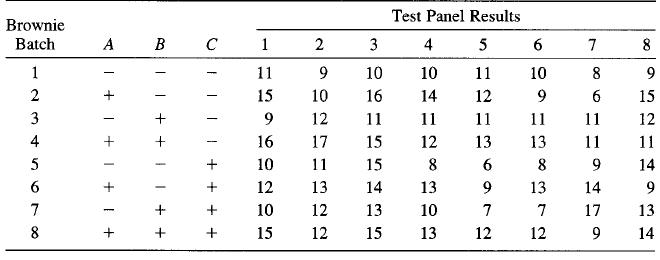The scrumptious brownie experiment. The author is an engineer by training and a firm believer in learning
Question:
The scrumptious brownie experiment. The author is an engineer by training and a firm believer in learning by doing. I have taught experimental design for many years to a wide variety of audiences and have always assigned the planning, conduct, and analysis of an actual experiment to the class participants. The participants seem to enjoy this practical experience and always learn a great deal from it. This problem uses the results of an experiment performed by Gretchen Krueger at Arizona State University. There are many different ways to bake brownies. The purpose of this experiment was to determine how the pan material, the brand of brownie mix, and the stirring method affect the scrumptiousness of brownies. The factor levels were

The response variable was scrumptiousness, a subjective measure derived from a questionnaire given to the subjects who sampled each batch of brownies. (The questionnaire dealt with such issues as taste, appearance, consistency, aroma, and so forth). An eight-person test panel sampled each batch and filled out the questionnaire. The design matrix and the response data are shown below:

(a) Analyze the data from this experiment as if there were eight replicates of a 23 design. Comment on the results.
(b) Is the analysis in part (a) the correct approach? There are only eight batches; do we really have eight replicates of a 23 factorial design?
(c) Analyze the average and standard deviation of the scrumptiousness ratings. Comment on the results. Is this analysis more appropriate than the one in part (a)? Why or why not?
Step by Step Answer:





